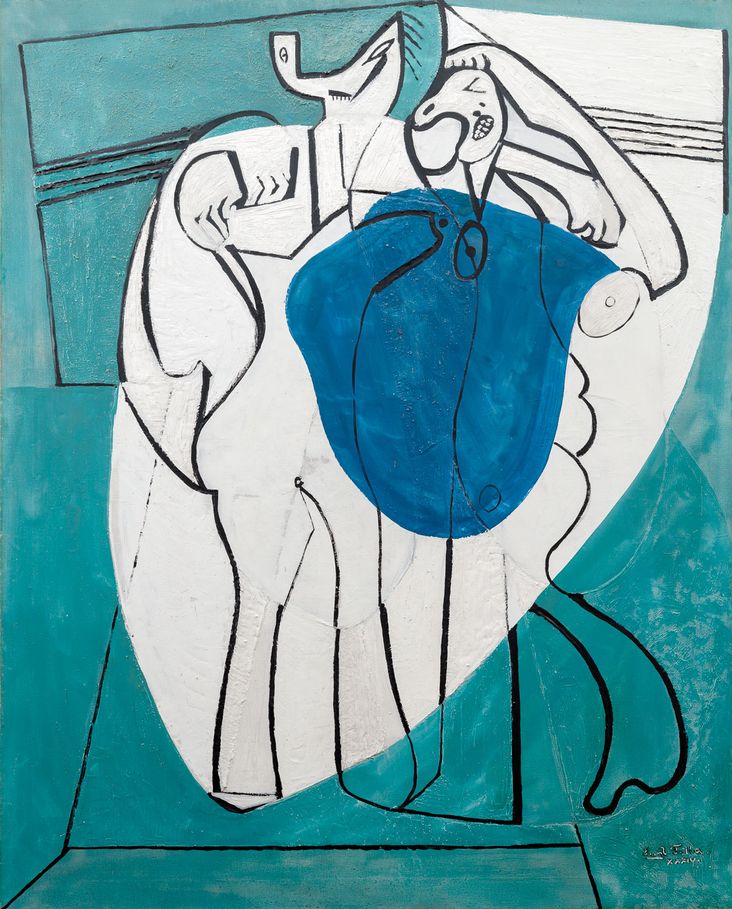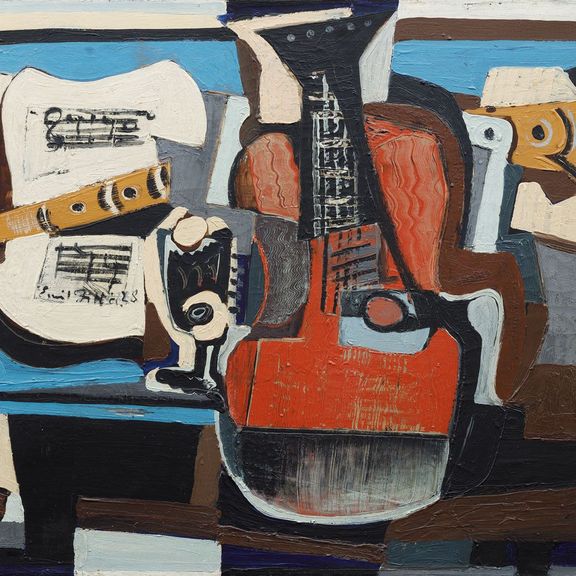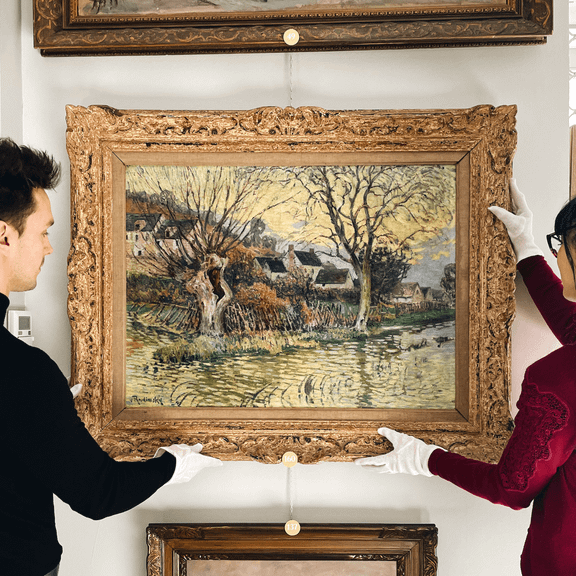
mixed media (oil, enamel, sand) on canvas
1934
lower right
162 × 146 cm
framed
Before the middle of the 1930s, Emil Filla underwent a recapitulation of his previous work, and his style and brushwork became more relaxed. In May of 1932, a comprehensive solo exhibition was organised at SVU Mánes for his fiftieth birthday, symbolically closing his work to date. Subsequently, in November, an exhibition of contemporary fine art presenting works related to surrealism took place, entitled the International Exhibition Poetry 1932 [Mezinárodní výstava Poesie 1932]. At this exhibition, Filla presented himself for the first time with works oriented in this way when he exhibited several canvases, mostly of figurative compositions. The theme of the female nude gradually became as important a motif for him as the still life. In these paintings, he reached the peak of his possibilities within the combination of vitality and sensual implicit meaning, but not as openly as we know from the works of Picasso. Filla followed the idea of depicting magical goddesses of femininity, in which he could demonstrate his joy in painting.
This approach is perceptible in the presented painting, which, over the years, acquired a few similar titles (Two Figures, Two Girls, Couple), depicting standing women in a friendly embrace. At first glance, the work impresses not only with its monumentality but especially with its masterful presentation and desire to experiment, as if surrealism was as natural a direction for Filla as cubist composition. He gave these women’s faces an almost amorphous form; therefore, they may resemble masks or the faces of praying mantises. Filla approached the human body as an autonomous entity and freed the figures from any descriptiveness. He thus revived in them an imaginary primordial force reminiscent of the prehistoric Venus, the triumph of the vital and animal forces of nature, which was one of the topics he dealt with intensively at this time. There are only four colours in the captivating, well-thought-out colour scheme. Black outlines, green, which delimits the outer environment around the figures, and white with blue, bringing tension into the painting. Although Filla used a real-life model for the presented work, he achieved the threshold of “pure painting” in the sense of absolute simplification in colour and morphology. There is no doubt that he was several decades ahead of his time.
The painting was exhibited for the first time at the members’ exhibition of SVU Mánes (12 October – 25 November 1934, cat. No. 37). Since the 1960s, it has been part of the collection of the National Gallery Prague (entitled Couple), where Jiří Kotalík included it in an overview exhibition of the development of Czech modern painting in the 1920s and 1930s, which temporarily replaced the permanent exhibition (Czech Painting of the 20th Century from the Collections of the National Gallery. Part II. The Generation of Osma, Tvrdošíjní, Umělecká beseda, National Gallery Prague, Municipal Library, May 1973, cat. No. 232). The art historian František Šmejkal also chose it for a groundbreaking exhibition that took place in the early eighties in Brno under the title Lyrical and Imaginative Cubism 1926–1935 (Brno House of Arts, 30 August – 2 October 1983, cat. No. 19) and was subsequently rerun in the Prague City Gallery (Old Town Hall, February 1984, cat. No. 19). The work was published in the book P. Škranc: Emil Filla, Kroměříž 1989, p. 70. There is also a preserved photograph of it from the archive of Josef Sudek. On the stretcher is the artist’s number F 300 in red pencil and a stamp from the National Gallery in Prague with the inventory number O 8169. The work originally came from the famous collection of JUDr. Jaroslav Borovička, who considered it one of his favourite paintings. The authenticity has been verified by the Filla Foundation, and the painting will be included in the forthcoming inventory of the artist’s work. Assessed during consultations by PhDr. R. Michalová, Ph.D., and Mgr. T. Donné. The expertise of PhDr. K. Srp is attached.







